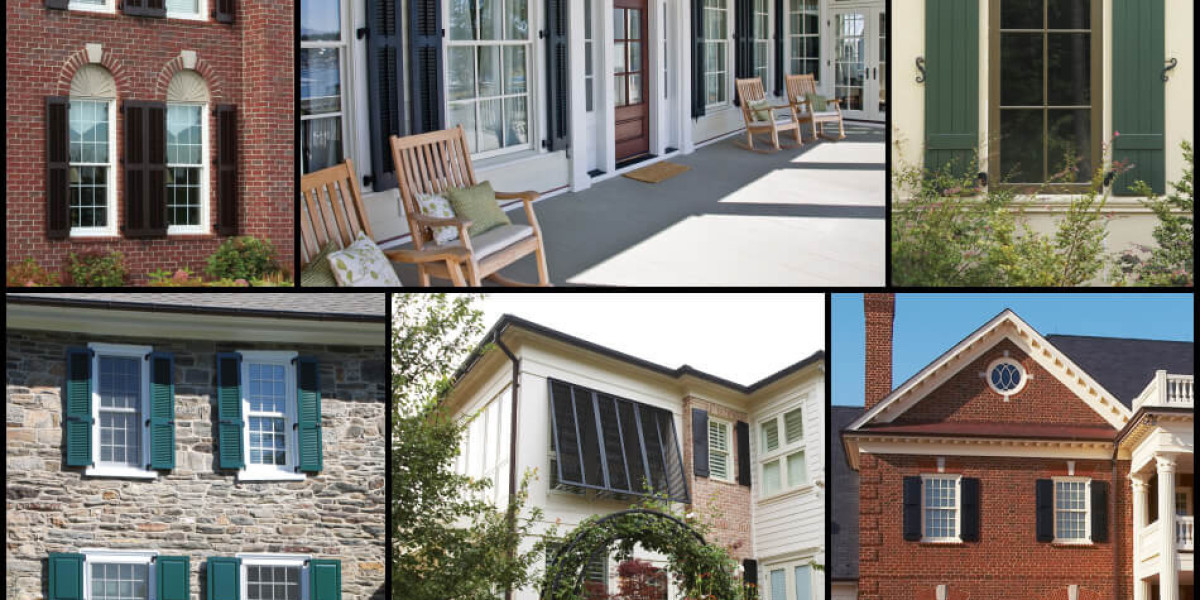Shutters are a classic and versatile window treatment that offers both aesthetic appeal and practical benefits. Used for centuries in homes and buildings around the world, shutters have evolved in design and function, adapting to modern needs while retaining their traditional charm. This article explores the history, types, benefits, and contemporary applications of shutters in home design.
Historical Overview
Ancient Origins
Shutters have been used since ancient times, with evidence of their existence dating back to ancient Greece and Rome. Early shutters were made from marble or wood shutters and were used to protect windows and control light and ventilation.
- Greek Shutters: Often made from marble, they were used in temples and homes to provide privacy and security.
- Roman Shutters: Typically crafted from wood, Roman shutters were used to regulate temperature and light in homes and public buildings.
Medieval to Renaissance
During the Medieval period, shutters became more widespread in Europe, particularly in castles and fortresses where they provided security against invaders. The Renaissance saw a refinement in shutter design, with more attention given to aesthetics and craftsmanship.
- Medieval Shutters: Sturdy and functional, often made from heavy wood with iron fittings.
- Renaissance Shutters: More decorative, featuring intricate carvings and designs, reflecting the artistic trends of the time.
Colonial and Victorian Eras
Shutters became a staple in colonial homes in America, valued for their practicality and aesthetic appeal. The Victorian era saw the introduction of louvered shutters, which allowed for better control of light and air while adding a decorative element to the facade.
- Colonial Shutters: Simple and functional, often painted in white or natural wood tones.
- Victorian Shutters: Featuring louvers and more elaborate designs, adding to the architectural charm of Victorian homes.
Types of Shutters
Shutters come in various styles and materials, each offering unique benefits and aesthetic qualities.
Based on Design
- Louvered Shutters: Characterized by horizontal slats that can be adjusted to control light and airflow. Ideal for both interior and exterior use.
- Paneled Shutters: Solid panels that provide maximum privacy and security. Available in raised, recessed, or flat panel designs.
- Board and Batten Shutters: Rustic in appearance, made from vertical boards held together by horizontal battens. Perfect for cottages and farmhouse-style homes.
- Café Shutters: Half-height shutters that cover only the lower part of the window, allowing light to enter while providing privacy. Commonly used in kitchens and bathrooms.
- Plantation Shutters: Feature wide louvers, offering a contemporary look with excellent light control and insulation.
Based on Material
- Wooden Shutters: Traditional and versatile, offering a warm and natural look. Can be painted or stained to match any decor.
- Vinyl Shutters: Durable and low-maintenance, resistant to moisture and fading. Ideal for humid or coastal areas.
- Composite Shutters: Made from engineered wood and polymers, combining the beauty of wood with the durability of synthetic materials.
- Metal Shutters: Strong and secure, often used for commercial buildings or in areas prone to storms and high winds.
Benefits of Shutters
Aesthetic Appeal
Shutters add a timeless elegance to any home, enhancing curb appeal and complementing various architectural styles. Whether traditional or contemporary, shutters can be customized to suit the aesthetic preferences of homeowners.
Light and Privacy Control
Shutters provide excellent control over light and privacy. Louvered shutters, in particular, allow homeowners to adjust the slats to let in the desired amount of light while maintaining privacy.
Energy Efficiency
Shutters can improve a home's energy efficiency by providing an additional layer of insulation. They help keep homes cool in the summer by blocking direct sunlight and warm in the winter by reducing heat loss.
Durability and Low Maintenance
High-quality shutters are durable and require minimal maintenance. Materials like vinyl and composite are resistant to warping, cracking, and fading, ensuring long-lasting performance.
Increased Property Value
Installing shutters can increase the value of a property. Their timeless appeal and functional benefits make them an attractive feature for potential buyers.
Contemporary Applications
In modern home design, shutters are used both functionally and decoratively. They can be installed on the Melton Classics interior windows to add a touch of elegance and improve light control or on exterior windows to enhance curb appeal and provide additional security.
- Interior Shutters: Used in living rooms, bedrooms, and bathrooms for privacy, light control, and aesthetic appeal.
- Exterior Shutters: Installed on the outside of windows for added security, storm protection, and to boost the home's exterior design.
Conclusion
Shutters are a versatile and timeless window treatment that offers numerous benefits, from aesthetic appeal to energy efficiency. Their rich history and adaptability to modern needs make them a valuable addition to any home. Whether enhancing the exterior facade or improving the interior ambiance, shutters continue to be a popular choice for homeowners seeking both style and functionality.









